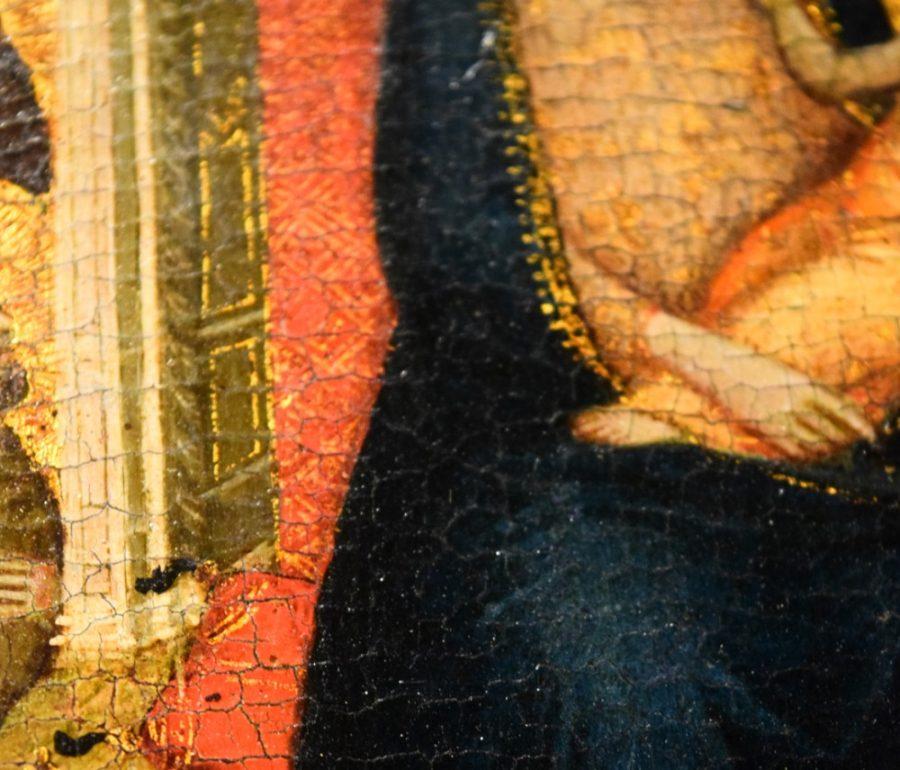The UA Museum of Art is home to paintings as old as 600 years old, and the museum’s curators are constantly striving to maintain the perfect environment to preserve these beautiful pieces of history in an attempt to combat the fragility of the pieces themselves.
“Exhibiting artwork is always a tricky balance,” said Nathan Saxton, senior exhibition specialist at the art museum. “The two parts of our mission are basically at odds with each other; that is, to protect the artwork as much as possible but also to provide the public with the best opportunity to view the artwork. The safest place for a work of art is in a dark room, never touched — and therefore never seen.”
According to Olivia Miller, the curator of exhibitions and education, the main concern for artwork conservation is light. This is addressed using UV filters.
A painting’s impermanence is due to the composition of the paint itself.
Paint is made up of three components: a binder, a pigment and a solvent, according to Brendan Tobin, a UA alumnus who studied materials science and engineering and is now earning another master’s degree at Stanford University.
Pigment gives paint color. From medieval times until the 1800s, paint pigment was made out of minerals, plants or even bug wings. Pigments made out of minerals such as oxidized copper for green, or oxidized iron — rust — for red, tend to last a long time. This is because they are very stable chemically. Organic materials, however, start to fade fairly quickly in comparison.
Starting in the 1800s, inorganic synthetic pigments, used in acrylic paints, were created using heavy metals such as cadmium and lead. Acrylics allowed artists access to more vibrant colors, instead of only those found in nature. However, synthetic pigments are not stable, as they react with oxygen and light and quickly break down, Tobin said.
Artists ensured the preservation of their paintings by adding a clear layer of varnish over their finished piece. Inorganic pigments then became less susceptible to reactions with oxygen.
Without varnish, the combination of heat, light and oxygen causes unstable pigments to undergo chemical reactions, often leading to fading, cracking or both. One particular painting in the museum has a series of six panels laid out on display. The center painting is the most faded.
“The panels were [part of] a ciborium … enclosed like a box so all of the panels were folded inward and protected by the light, so they’re less faded,” Miller said.
The different colors of this painting are degraded to different degrees. This is due to the chemical composition of each of the pigments. The black background of the panel used to be blue but faded over time because it was made with the mineral azurite.
“Azurite doesn’t hold up as well as other blue minerals,” Miller said. “So, ideally, artists would have used lapis lazuli, [but] it was so expensive they had to use it sparingly.”
That’s why maintaining a stable environment is imperative for art preservation.
For the paintings that are displayed in the museum, the museum is kept at 70 degrees Fahrenheit and 45 percent humidity, Miller said.
Recently, the art museum began a cooperative effort with the College of Optical Sciences to ensure the safety of each of the paintings in the collection.
The goal is to develop light sources that “allow only the wavelengths of light that are necessary to view the work in its full beauty … without causing a bit more damage than necessary,” Saxton said. “James Burns, the museum’s new director, has been particularly supportive of this project, and we’re all excited to see where this leads.”
_______________
Follow Mikayla Mace on Twitter.









